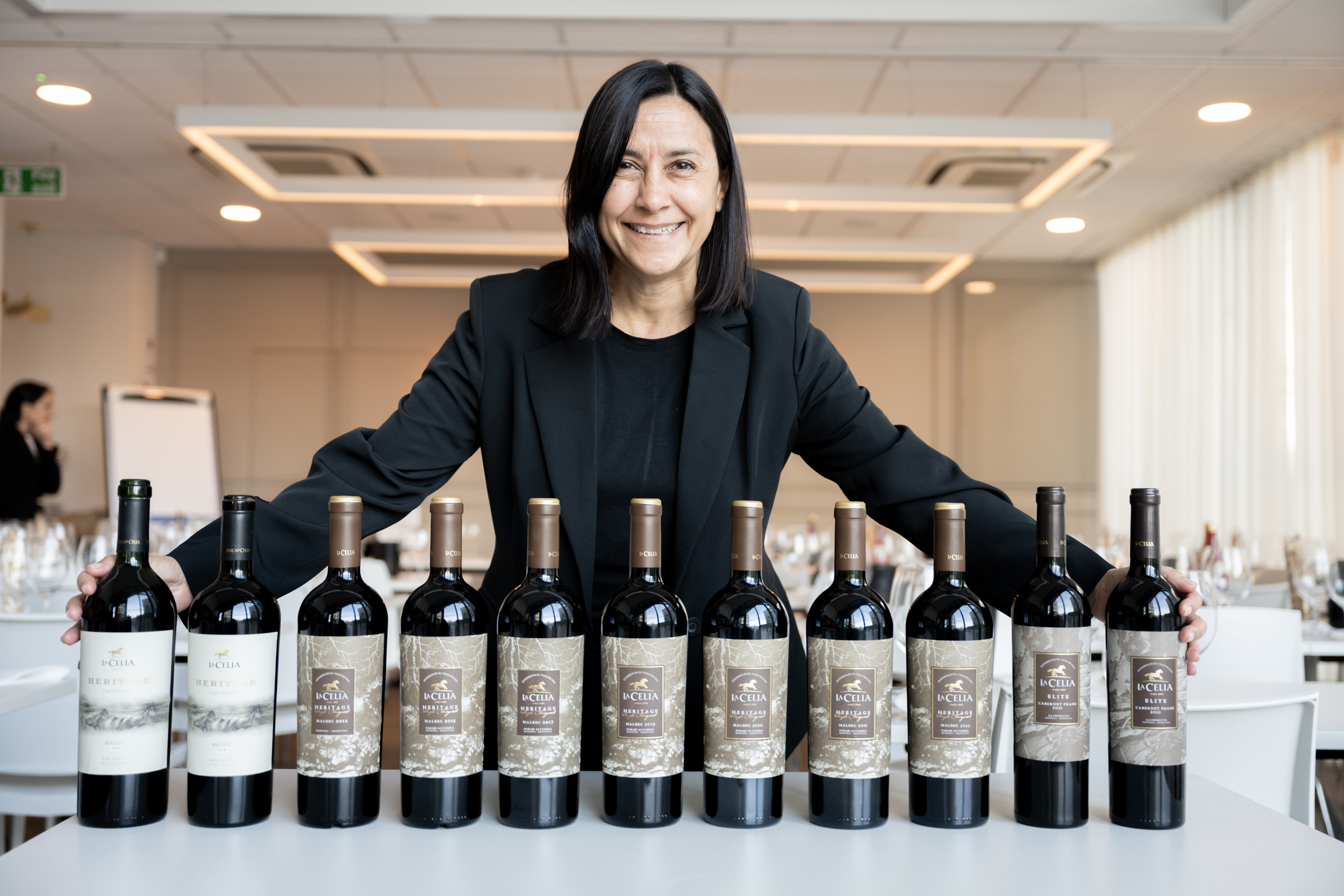This website uses cookies so that we can provide you with the best user experience possible. Cookie information is stored in your browser and performs functions such as recognising you when you return to our website and helping our team to understand which sections of the website you find most interesting and useful.
Drinks design: The cult of craft
By Lauren EadsThe image of a lone brewer toiling away in a garage to produce 100 cases of beer has been a powerful marketing tool for the craft beer category.
Constructed and communicated through careful design cues, it simultaneously speaks of a product’s craftsmanship, authenticity and provenance, qualities that have dominated not only beer, but increasingly the wine and spirits sector, expertly tapping into the millennial consumer’s taste for handcrafted products made at their origin – preferences that have simultaneously seen this influential demographic shun products that smack of mass-production and overt marketing.
Clamouring to cash in on the growing cachet of craft, wine, spirits and beer producers of all sizes have been borrowing cues from craft beer to convey a product’s handcrafted, artisan roots through rustic labeling, crown caps or handwritten print. Last year, UK supermarket Aldi launched a range of 50cl ‘craft beer-style’ squat wine bottles, designed to appeal to the millennial consumer.
Communicating, or constructing, an appealing and authentic brand story is also key to a product’s craft appeal. Design agency Denomination recently unveiled a packaging and brand identity for Fazzoletto, a new brand from Piedmont-based wine co-operative Araldica, developing a story around the ‘fazzoletto’ neckerchief, used to identify Italian partisan fighters at the end of World War II – a clever nod to its Italian heritage. While its label features the image of classic Italian sculptures ‘vandalised’ by the brightly coloured cloths, a second tactile fazzoletto adorns the neck of the bottle itself.
CULT OF CRAFT
Brewdog’s LoneWolf Distillery
For some producers, the image of a lone brewer, distiller or winemaker crafting their wares in situ and by hand is not far from reality, with their choice of design accurately reflecting their small-batch operation, family-owned business or authentic heritage. But as the cult of craft has blossomed, so too has the interest of global brewers and corporate investors in the category, with acquisitions serving to swell the size of once small-batch operations, skewing the definition and perception of craft, and how its values are communicated.
Several big brewers have launched their own ‘craft beers’ in recent years. This year, Heineken launched two new beers under its new Maltsmiths Brewery label – a Bavarian-style Pilsner and an American-style IPA – with the intention of taking a slice of a “huge untapped market” by appealing to people who hadn’t yet tried craft beer, reimagining the trend for a new market and shifting its values.
Meanwhile, Scottish brewer BrewDog, which was founded in 2007 out of the back of a van, and widely credited with kick-starting the craft-beer craze in the UK, was recently valued at £1 billion, having sold a quarter of its business to US-based TSG Consumer Partners. The founding of multiple BrewDog bars worldwide, a craft beer hotel and a second operation in Ohio, has seen it expand vastly in the past 10 years. And last year, Beam Suntory bought London craft distiller Sipsmith, while AB InBev has been on the acquisition trail for the past two years, snapping up a number of US craft breweries and London’s Camden Town Brewery in a bid to hang on to the coat tails of craft.
While the success of once small-scale producers should be commended, can a brand evoke a genuine air of craft when consumers are aware that they are being bankrolled by the biggest brewer in the world, even more so when a product is perfectly open about its big-beer background? And what does it mean for the realms of design – the traditional battleground on which producers have fought to prove their craft credentials?
As Margaret Nolan, creative director of drinks-design agency Denomination, notes: “Consumers are increasingly looking for detailed information because they are becoming more discerning about what they are drinking: they love to be involved. They are cynical about big brands that try to claim this territory when it’s not credible, especially with brands that are mass-produced on an industrial scale.”
Shawn Bowen, creative partner at London-based design agency B&B Studio, agrees, warning that drinks consumers have become wise to the tactics of global brands co-opting terms such as ‘craft’, ‘artisanal’ and ‘authentic’ – and their associated design cues – to sell mass-produced beers and spirits.
“As a result, genuine craft brands are seeking new ways to assert their difference,” he says. “It doesn’t mean that the values of craft or authenticity are no longer important – they’ve always been at the heart of good drinks design – it just means finding new ways to express them and avoiding the obvious tropes that have recently become clichés.”
Bowen believes an even more “stripped back” approach to design is emerging among brands keen to shift the focus from the label to the liquid, in what he describes as “anti-branding”. Offering an example, Bowen cites the Lone Wolf Distillery – BrewDog’s first foray into spirits production. The design itself is based on a simple geometric, while its labels are secured simply with an elastic band, allowing consumers to remove the label and be left with a “pure, unsullied, simply embossed bottle”.
SINGLE-MINDED
“The stripped-back approach is designed to draw attention to the spirit and its process, not the art of marketing,” Bowen says. “Even the logo is a wolf’s head distilled down to its purest geometric elements, representing the purity of the liquid itself and the single-minded nature of the brand’s mission. For Lone Wolf, bringing real craft back to the craft-spirits industry is an authentic mission – they’re outspoken about the multitude of brands buying in industrial alcohol, mixing in a few botanicals and labelling it ‘craft’.”
With respect to craft beer, which arguably set in motion the first craft boom, a stripped-back approach to design is no longer as effective, believes Pete Hayes, co-founder and director at London creative design agency PB Creative. What might once have suggested the “authenticity, passion and a penniless brewer in his garage”, now simply suggests an “under-considered product”, he says.
“BrewDog no longer has the handmade, homemade look that so many craft beers project,” he says. “What started out as ‘anti-design’ has now become much slicker and smoother, cleverly borrowing design elements from the big brands (who are, ironically, the most crafted when it comes to design), yet with an edge that keeps the brand human and inspires an emotional connection with its target consumer.”
Pernod Ricard’s OPN
As the design cues of craft evolve, so too does the technology used by drinks brands to connect with consumer and convey a brand’s values, with producers tapping into the demands of modern life and consumption habits to offer tailored experiences. This year French drinks producer Pernod Ricard unveiled its OPN cocktail library – an interactive at-home cocktail library that mixes and serves drinks based on a library of 300 recipes – taking at-home entertaining and convenience to the next level. First unveiled in 2014, when it went under the name of Gutenberg Project, the revamped OPN version made its debut at the CES technology trade show in Las Vegas in January, ahead of its anticipated commercial roll-out in early 2018.
The device has been developed by Pernod Ricard’s Breakthrough Innovation Group (BIG) – a team of 10 people assembled in 2012 to invent new products and services that will “radically change and enhance” the consumer experience. It comprises five 75cl cartridges, filled with spirits that are connected intelligently to track levels, measure and mix drinks via an app, allowing the user to learn and customise cocktail recipes and adapt them to available ingredients. The system can also curate shopping lists for desired serves, monitor spirit levels and automatically order refills to be delivered to your door on demand.
Partner Content
NEW EXPERIENCES
Veuve Clicquot’s ‘Clicq’call’
“OPN is redefining relationships between the user and product, creating a whole new range of experiences. Its potential is tremendous,” said Alain Dufossé, managing director of BIG, unveiling the project in January. “We are utterly committed to developing the future of entertaining at home: an experience that is connected, engaging, tailored and responsible. With OPN, our goal is to make it easier to enjoy meaningful moments of convivialité at home.”
While set apart from craft production, in the liquid sense, the ultimate goal of OPN is similar to that of an artisan spirits, beer or wine producer – to offer consumers an experience based on conviviality, convenience and personalisation. Regarding the latter, this year Veuve Clicquot launched a limited-edition, customisable gift box of its rosé Champagne. Named ‘Clicq’call’, the gift box allowed the purchaser to record a message captured by voice-recording equipment concealed in the box, and have that message played to the recipient upon opening the gift box. And Moët, for a second year, opened personalisation stations in London, giving consumers the chance to add a picture of themselves onto a bottle of Champagne.
“In luxury drinks, brands are responding to consumers’ desire for uniqueness and personalisation, as well as craftsmanship,” notes Nolan.
Buoyed by the rising popularity of on-demand delivery apps, such as Amazon Prime and mail-order wine services, this year also saw the launch of Garçon Wines, a UK start-up that delivers wine in a bottle shaped to fit through the letterbox. The slimline bottles have the same 750ml volume as a conventional glass wine bottle, but have been flattened and made longer so they can be delivered, and are made from glass-like hard plastic and packed in cardboard boxes.
Carrying on the theme of convenience, this year Carling launched a ‘beer button’ that sits on your fridge, allowing customers to order more beer straight from the supermarket without going online. The company claimed the move would “revolutionise the online shopping experience” by streamlining ordering and increase brand loyalty by boosting the visibility of a brand.
As technology pulls us closer, yet further apart, drinks producers are responding to a growing demand for convenience from consumers, with frantic lifestyles influencing product design. But as the bank balances of global and craft producers become increasingly intertwined, is the craft trend on the wane?
AUTHENTICITY AND CRAFT
For Nolan, authenticity and craft will always be appealing because of what they stand for – a real story behind a genuine product and the skill it takes to produce it. However, it is the way in which the values of craft are expressed that will change – not necessarily the message itself. Producers don’t have to stick with traditional cues of craft, such as handwriting, overseals, individual numbering, raw paper stock or timber, believes Nolan, as anything that is “beautifully finished can express craft”.
“Take an incredibly modern, minimal table. The fact it is beautifully made means it oozes craft but in a completely modern way. Because it is minimal the craft is essential – it has to be beautifully made – and from a beautiful material, otherwise it will look cheap and the whole concept will fall flat.
“It’s the same with packaging. You have to pay attention to the tactile execution; the materials, the form, the finish. There will be more contemporary expressions of craft through bespoke packaging, and utilising materials and finishes in more innovative ways.”
For Tom Hearn, business director at design agency Nude Brand Creation, the appropriation of craft by big producers only serves to strengthen the craft trend.
“There is no question the big brands are fighting back against the small craft brand revolution, but this doesn’t dilute the trend,” he says. “In fact, if anything, it further supports it. Big brands are built on the same craft values; and at their heart are master distillers and master breweries with years and years of knowledge and experience, expertly crafting their product with passion and care. It’s just these stories are often hidden behind the scale of the organisation, and need to be told.”
Hearn cites Martell as an example of a global brand, huge in scale, but with more than 300 years of “craft heritage”.
“Martell, like many established brands, can rival any ‘craft’ brand for stories, because being a craft brand isn’t about size: it’s an attitude, a passion for quality and a drive for authenticity. Values needed for any brand to be successful, and for that reason it’s here to stay.”
‘Craft’ might once have been the preserve of garagiste winemakers and one-man-band brewers, but as large producers increasingly seek to claim this territory its definition is evolving. For consumers, this serves to blur its boundaries and, to an extent, homogenise its offer – a slippery slope perhaps – but its core values of authenticity and quality mean it will always be in demand. Perhaps the image of the lone brewer was only ever an illusion, but its message remains powerful, and valuable, no matter how big or small an operation.
While the liquid is what really counts, the power of design cannot be underestimated, in the eyes of the consumer, to separate the wheat from the chaff, or in this case, the craft from the just plain crafty.





